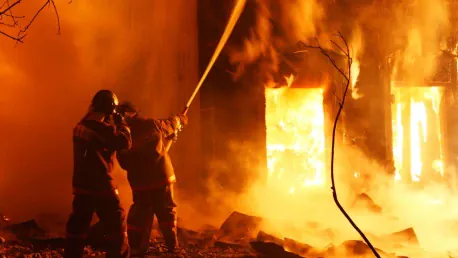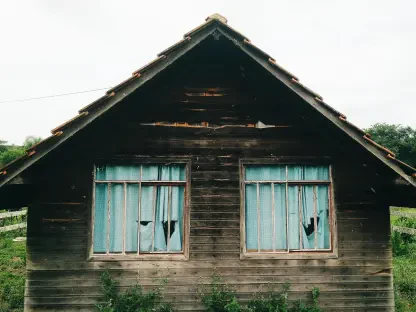Listen to the Article
The rate of occurrence of wildfires has increased in California over the last decade. The hot, dry summers with the Santa Ana winds, coupled with increasing temperatures have created a vulnerability in the region. Over the last 30 years (the 1980s to the 2010s), the wildfires in California have increased in severity by approximately 30%. This is according to Jon Wang, a professor at the University of Utah.
Insurance companies operating in California have scaled back homeowners insurance coverage due to several factors, including the prevalence of wildfires. With the high costs of reinsurance and state regulations that prevent pushing costs on to customers, insurers have resorted to canceling new applications and denying renewal for certain policyholders.
On the 7th of January 2025, a wildfire ravaged parts of Los Angeles. Since then, four other fires have broken out which firefighters have struggled to contain. Close to 30 people tragically lost their lives, and 17,000 structures burned down.
Adding to the social issues, wildfires exacerbate the homelessness crisis in California. Even renters in undamaged buildings are affected, as landlords often increase prices due to the increased demand for property.
In the absence of coverage, the big question for thousands affected by the wildfires is, what’s next?
Leading Insurers Deny Coverage
In 2024, the largest US-based insurer, State Farm, revoked household coverage for 30,000 households in California. Citing reasons such as “inflation, catastrophe exposure, reinsurance costs, and limitations of working within decades-old insurance regulations”, the insurance company has come under criticism for leaving tens of thousands without coverage.
In addition to this, the company had stopped processing new applications.
But State Farm aren’t the only players in the fame shying away from California and its wildfire-prone landscape. All State, Farmers, and USAA have also taken a similar approach in recent years, rejecting new policy applications from Californians in an effort to reduce undue risk, considering the cap on insurance costs mandated by state regulations.
Several other leading insurers, including All State, Farmers and USAA, have also in recent years curbed new policy applications in California as part of an effort to limit their exposure to policies that carry what they see as undue risk given what the state’s regulators have allowed them to charge policyholders. Similar reasons of escalating risk, high repair costs and rising reinsurance premiums have been cited in those decisions.
The Impact of Insurance Non-Renewal and Undercoverage
The LA fires have exposed a growing problem among homeowners and insurers. Altadena homeowner, Roberto Covarrubias, was one of the victims of the Eaton fire, and the predicament he finds himself in is indicative of the struggles of thousands of families.
Despite taking out homeowners insurance, Mr Covarrubias found that he’s underinsured. While his four bedroom, four bathroom home was insured to the value of $1 million, the cost of a rebuild would require an additional $500,000 to $1 million.
Dr Jeremy Porter conducts property valuations after natural disasters for First Street, a non profit organization. In his experience, “most Americans [don’t] understand that they’re underinsured.”
The underinsured, while unable to fully recover their investment, are still slightly better off than the uninsured. While some couldn’t afford insurance from the outset, others were forced to drop their coverage due to drastic premium increases and non-renewal.
Approximately 1,626 State Farm customers residing in the Palisades were left vulnerable when their insurance for wildfires was not renewed. With no insurance, no option for coverage, and their homes destroyed in the fire, this is the group of people most severely affected – what’s next for them?
California FAIR Plan
One of the options available to the under- and uninsured is the Fair Access to Insurance Requirements plan. The plan aims to provide insurance to high-risk homeowners, and instead relies on an insurance pool of California-licensed insurers, rather than relying on a single insurer.
The FAIR plan is administered by the California FAIR Plan Association. As a non-governmental entity, the money for insurance doesn’t come from taxpayer funds and is solely sourced from profits derived from policy sales.
For homeowners facing non-renewal of the policies, or feel they are underinsured against the risk of wildfires, the FAIR plans presents a viable alternative. However, experts warn that the claims process may still prove to be slow, considering the sheer volume of claims that are processed after a wildfire. Reports suggest that close to 3,600 policyholders in the Altadena and Pacific Palisades areas have already submitted claims.
The Long Term Viability of Insurance in California
While the Fair Plan provides some relief to the thousands locked out of insurance due to non-renewal, it doesn’t seem to be a long term solution.
In 2024, the President of the FAIR Plan, Victoria Roach, explained to the California Legislature that the fund was essentially one major event away from insolvency. ““There’s no other way to say it, because we don’t have the money on hand [to pay all the claims] and we have a lot of exposure.”
In the short-term, the Los Angeles county insurance commissioner, Ricardo Lara, said he has used his moratorium power to prevent insurance companies from canceling or not renewing home coverage for Los Angeles wildfire victims in affected zip codes over the next year.
However in the long term, a different solution must come to the fore. The state of California is investigating new ways to stabilize the insurance market in the face of emerging threats like climate change.
In the longer term, the state has been looking for fixes as its insurance market is overburdened by the devastation caused by climate crisis-fueled disasters. A new regulation that took effect this month allows insurers to consider the climate crisis when setting their prices – which many insurance companies had said was a reason they pulled out of the state’s insurance market.
California previously did not let insurance companies factor in current or future risks when deciding how to price their policies. Coffey says that the government cannot be a blind insurer of people’s homes. “That’s not something the government can be in the business of,” he says. “It’s too expensive and it would overwhelm the system economically.
“If people thought it was expensive now to live in California, I think they should understand that it’s priced based upon the risks,” Coffey says. “And California has a lot of insurance risk between earthquakes and wildfires, so you’re gonna have to pay a lot more.”
California is not alone – across the country, average homeowners insurance premiums have increased by more than 30% between 2020 and 2023, according to the Brookings Institution, due increases from climate-linked disasters as well as swelling home building costs. In Florida, the government-run Citizens Property Insurance Corp, their version of Fair, is one of the 10 largest home insurers in the state.
Borow is hopeful that Fair will pay out for his claim, and that he may get some supplemental funds from State Farm.
Coordinating between State Farm and Fair has been extremely difficult, he said. “There’s just a ton of unknowns. And so every question you have on the phone, the representatives are like, I honestly don’t know. I’m trying to find out the answer. So no one knows what the hell is going on.”
Getting the companies to pay out on claims could be a challenge in California even before the fires. In 2023, three home insurance companies in the state declined nearly half their claims – higher than the national average. LA-based Farmers Insurance topped the list, denying about 50% of claims for payment, according to reporting from the LA Times.
Borow hopes he eventually will get to rebuild his home in the Palisades – “hopefully, four years from now, we will have a house again. I would say that’s the best-case scenario.”
Conclusion
The escalating wildfire crisis in California underscores the profound challenges faced by residents, businesses, and insurers. As the frequency and severity of natural disasters intensify, the insurance market has become an increasingly fraught space—leaving many homeowners with difficult decisions about affordability, coverage, and long-term viability.
State Farm’s withdrawal and the limitations of the Fair Plan highlight the urgent need for systemic solutions that balance financial sustainability with the protection of vulnerable communities. Short-term measures, such as moratoriums on policy cancellations, provide temporary relief but fall short of addressing the broader structural issues in the state’s insurance landscape.
For Californians, the road ahead will require resilience, innovation, and collaboration between public and private sectors. Policymakers must explore strategies that promote equitable access to insurance while incentivizing risk reduction through fireproofing and climate adaptation. At the same time, insurers must work to rebuild trust with policyholders and find ways to navigate the growing risks of climate-linked disasters.
The stakes are high, and the decisions made today will shape California’s ability to withstand future crises. As communities rebuild, the question remains: Can California create a sustainable model that ensures protection without pricing residents out of their homes? Only time will tell, but one thing is clear—there is no simple solution to this complex challenge.









